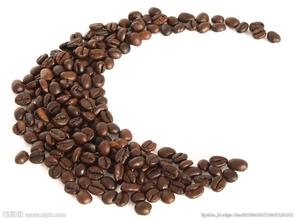Introduction to the characteristics of Flavor varieties in the principle of Italian Coffee extraction
Introduction to the principle of Italian Coffee extraction, Flavor and Variety,
You can load the powder now. (it should be noted that there is no powder left in the dispenser. Each time it is boiled and ground, the coffee powder will oxidize completely after being exposed to the air for a few minutes, and the brewed coffee will not be able to drink. Now some coffee shops are used to filling up their dispensers, which is not correct. The right thing to do is to quickly pull the dispenser lever while grinding the powder, turn it off when the handle is almost full, and continue to pull the dispenser lever until all the coffee powder in the meter falls into the brewing handle.) Smooth the powder in the handle with your hand or scraper. (two precautions: first, wipe the powder back and forth when applying powder to make sure that the coffee powder fills all the gaps in the handle. If you use your hands, remember to wash your hands first. Second, the excess powder should be put into the dregs bucket, do not wipe back the quantifier, otherwise the coffee powder scalded by the high temperature will affect the taste of the next cup of coffee.) Coffee extract. The normal extraction time is 18 to 25 seconds to extract 20 to 30ml coffee, this is a personal point of view. This coffee should flow out like a paste and should not be spurted. If the flow rate is too fast, it is likely to be too coarse or too light to fill. It can not be a drop by drop, in that case it may be too fine grinding or too strong filling pressure. There is also the same person made of Espresso in the same grinding thickness, the same amount of extraction, the extraction time difference can not be more than 1 second, otherwise the filling pressure is unstable or uneven, the coffee taste difference will be very obvious, we need to continue to practice.) After the completion of the Espresso (after the completion of the coffee handle, coffee pressed powder surface smooth should not have any depression, otherwise the filling pressure is incorrect, need to continue to practice.)
After using the finished Espresso to add water to make black coffee (American coffee), if there is no miscellaneous taste, no astringent taste, no water in the coffee, and the bitterness of the coffee disappears quickly after the coffee is imported, it shows that the extraction of Espresso is basically qualified. In addition, the continuous production of 5 to 10 cups (the same specification coffee handle), coffee extraction time and coffee taste can not be significantly different. It shows that the technology is basically stable.
Crema (grease) I don't understand why we make Crema so much more complicated than itself. Crema is often grossly misdescribed, the most common of which is "an emulsified oil". Well, I think it's fair to say that to a very small extent. As far as we know, the amount of oil obtained by Espresso in the extraction process is unique. In the process of Espresso extraction, the energy of steam is used to emulsify the oil and form many small droplets that can be suspended on the liquid surface without flocculation. We all know that grease destroys milk bubbles, and the percentage of oil in Espresso is extremely low. Crema has nothing to do with oil. The CO2 formed in the baking process is released during extraction, and the change of pressure causes it to escape from the liquid phase and form bubbles. So, who is responsible for the surfactant? Not proteins-the baking process removes almost all useful proteins, which are consumed in various forms of reaction, including the favorite Maillard reaction [6]. The actual surfactant is likely to be a derivative of a reaction protein, protein melanin. Protein melanin is a large class of substances formed during baking, and they participate in the brown color of coffee beans. Melanin together with the other two polysaccharides forms a stable milk foam.

Important Notice :
前街咖啡 FrontStreet Coffee has moved to new addredd:
FrontStreet Coffee Address: 315,Donghua East Road,GuangZhou
Tel:020 38364473
- Prev
How does the thickness of coffee powder affect the taste of Italian coffee powder reference picture of common grinding thickness of coffee powder
How does the thickness of coffee powder affect the taste? in addition, before determining the grinding degree of coffee beans, baristas will first look at the color and oil production of cooked beans. The lighter the roasted coffee, the more complete and hard the texture is, the more difficult it is to extract. It is appropriate to grind slightly, but not too fine, so as not to highlight the sharp and sour taste. Baking
- Next

Is espresso blended before baking?-introduction to espresso
Is espresso prepared before baking? in 1992, the second generation of Italian coffee managers commissioned architect Matteo Thun to design a set of white coffee porcelain cups, which gave birth to a series of popular Italian coffee cups. Every year Yili invites modern artists to work together to design the annual collection cup. Despite the ever-changing exterior decoration, the cup itself is always strictly followed.
Related
- Beginners will see the "Coffee pull flower" guide!
- What is the difference between ice blog purified milk and ordinary milk coffee?
- Why is the Philippines the largest producer of crops in Liberia?
- For coffee extraction, should the fine powder be retained?
- How does extracted espresso fill pressed powder? How much strength does it take to press the powder?
- How to make jasmine cold extract coffee? Is the jasmine + latte good?
- Will this little toy really make the coffee taste better? How does Lily Drip affect coffee extraction?
- Will the action of slapping the filter cup also affect coffee extraction?
- What's the difference between powder-to-water ratio and powder-to-liquid ratio?
- What is the Ethiopian local species? What does it have to do with Heirloom native species?

